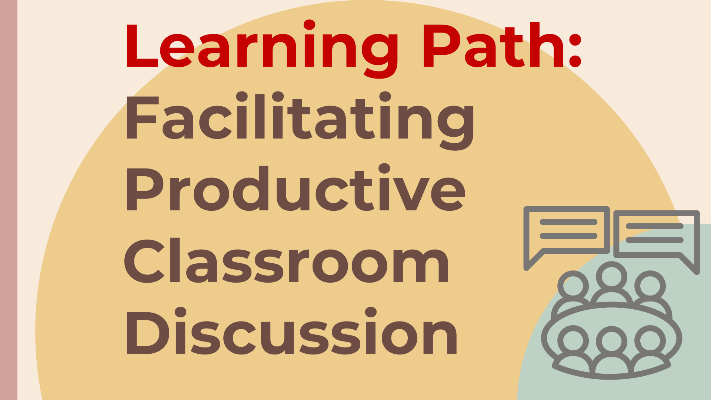Microlearning Units (MLUs)
|
View these Microlearning Units (MLUs) to understand and apply the principles, teaching processes and pedagogical approaches to the teaching of English Language, Literature and General Paper. |

|
|---|
What's New

Facilitating Productive Classroom Discussion
Learn how to facilitate productive classroom discussion to support your students’ learning. This series of microlearning units explores the facilitation of productive classroom discussion using talk moves to promote student engagement.
Microlearning Units
Teaching Principles and Processes: CLLIPS and ACoLADE
Inquiry-based Learning
Differentiated Instruction
-
How Important are Ongoing Assessment and Flexible Grouping in Differentiated Instruction?
-
How can EL Departments Build a Culture that Supports Differentiated Instruction?
-
How does Differentiated Instruction Work in a Large EL Class? –Determining Lesson Objectives
-
How does Differentiated Instruction Work in a Large EL Class? – Managing Learners and Learning
-
How does Differentiated Instruction Work in a Large EL Class? –Small Group Instruction
-
How Do We Select and Design EL Lessons for Differentiated Instruction?
Assessment for Learning
-
Diagnosing Students’ Learning Needs – Frequently Asked Questions
-
Feeding Up: Help Students Understand Expectations of Learning
-
Promoting Dialogic Feedback: Help Students to Actively Seek Feedback
-
Learning Path: Supporting the ABCs of Your Students’ Engagement with Feedback
-
Affective Engagement with Feedback: Build Students’ Confidence in Using Language
-
Behavioural Engagement with Feedback: Encourage Students’ Active Learning
-
Cognitive Engagement with Feedback: Deepening Students’ Understanding of Language
e-Pedagogy and Blended Learning
Using Questions to Deepen Learning
Selecting and Adapting Texts
Effective Communication for Learning
-
Learning Path: Providing Language and Literacy Support in Subject Classrooms
-
Using the Frayer Model strategy to learn subject-specific vocabulary
-
Using the Concept Circle strategy to learn subject-specific vocabulary
-
Using the Semantic Feature Analysis strategy to learn subject-specific vocabulary
-
Using the K.I.M. (Key Term, Information, Memory) strategy to learn subject-specific vocabulary
-
Using the Word Wall strategy to learn subject-specific vocabulary
-
Using the Annotating Texts strategy to learn subject-specific vocabulary
-
Using the Sequencing a Jumbled-Text strategy to learn subject-specific vocabulary

